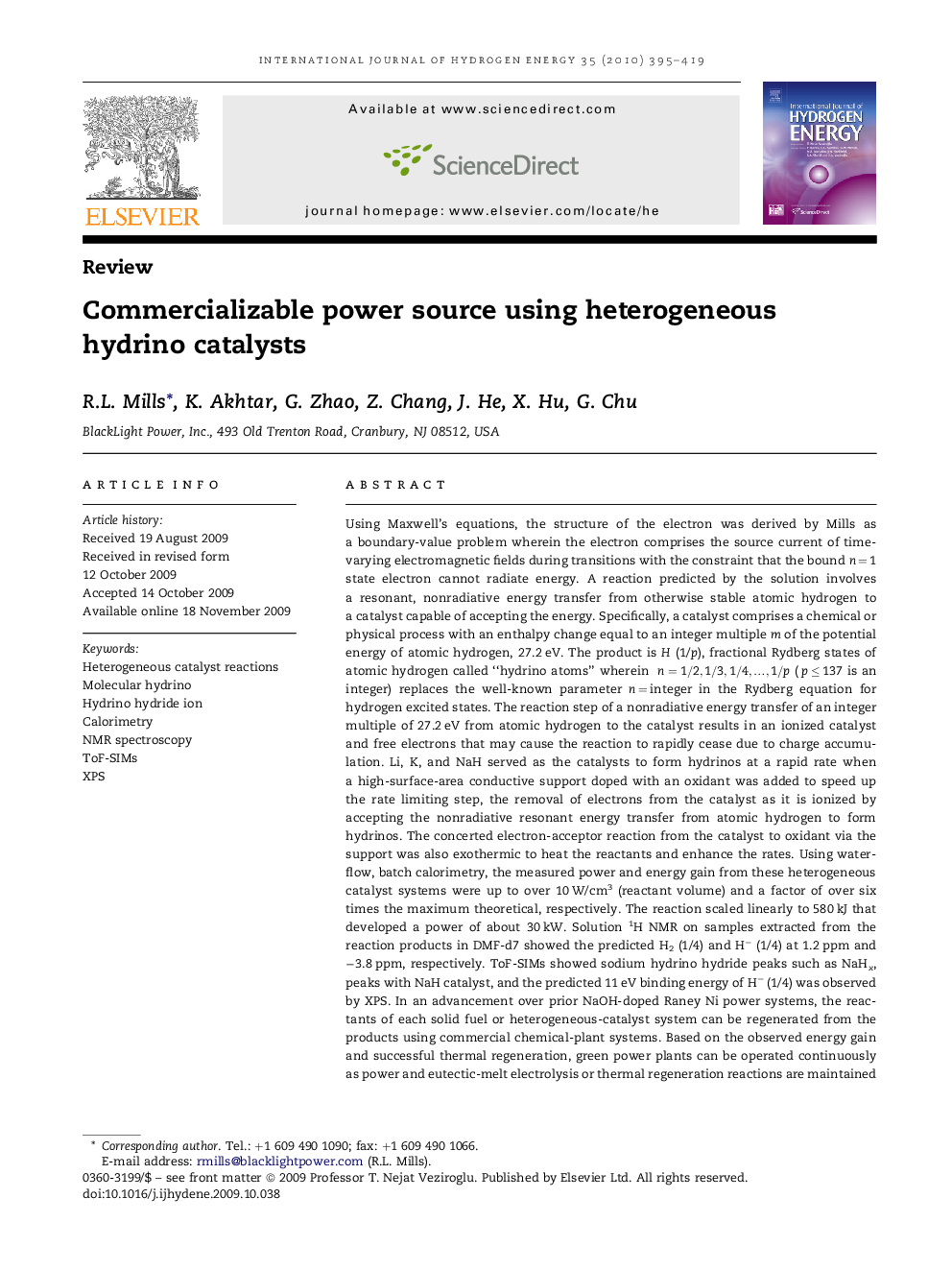| کد مقاله | کد نشریه | سال انتشار | مقاله انگلیسی | نسخه تمام متن |
|---|---|---|---|---|
| 1281022 | 1497615 | 2010 | 25 صفحه PDF | دانلود رایگان |

Using Maxwell's equations, the structure of the electron was derived by Mills as a boundary-value problem wherein the electron comprises the source current of time-varying electromagnetic fields during transitions with the constraint that the bound n = 1 state electron cannot radiate energy. A reaction predicted by the solution involves a resonant, nonradiative energy transfer from otherwise stable atomic hydrogen to a catalyst capable of accepting the energy. Specifically, a catalyst comprises a chemical or physical process with an enthalpy change equal to an integer multiple m of the potential energy of atomic hydrogen, 27.2 eV. The product is H (1/p ), fractional Rydberg states of atomic hydrogen called “hydrino atoms” wherein n=1/2,1/3,1/4,…,1/p n=1/2,1/3,1/4,…,1/p (p ≤ 137 is an integer) replaces the well-known parameter n = integer in the Rydberg equation for hydrogen excited states. The reaction step of a nonradiative energy transfer of an integer multiple of 27.2 eV from atomic hydrogen to the catalyst results in an ionized catalyst and free electrons that may cause the reaction to rapidly cease due to charge accumulation. Li, K, and NaH served as the catalysts to form hydrinos at a rapid rate when a high-surface-area conductive support doped with an oxidant was added to speed up the rate limiting step, the removal of electrons from the catalyst as it is ionized by accepting the nonradiative resonant energy transfer from atomic hydrogen to form hydrinos. The concerted electron-acceptor reaction from the catalyst to oxidant via the support was also exothermic to heat the reactants and enhance the rates. Using water-flow, batch calorimetry, the measured power and energy gain from these heterogeneous catalyst systems were up to over 10 W/cm3 (reactant volume) and a factor of over six times the maximum theoretical, respectively. The reaction scaled linearly to 580 kJ that developed a power of about 30 kW. Solution 1H NMR on samples extracted from the reaction products in DMF-d7 showed the predicted H2 (1/4) and H− (1/4) at 1.2 ppm and −3.8 ppm, respectively. ToF-SIMs showed sodium hydrino hydride peaks such as NaHx, peaks with NaH catalyst, and the predicted 11 eV binding energy of H− (1/4) was observed by XPS. In an advancement over prior NaOH-doped Raney Ni power systems, the reactants of each solid fuel or heterogeneous-catalyst system can be regenerated from the products using commercial chemical-plant systems. Based on the observed energy gain and successful thermal regeneration, green power plants can be operated continuously as power and eutectic-melt electrolysis or thermal regeneration reactions are maintained in synchrony. The system is closed except that only hydrogen consumed in forming hydrinos need be replaced. Hydrogen can be obtained ultimately from the water with 200 times the energy release relative to combustion. These results indicate current commercial feasibility.
Journal: International Journal of Hydrogen Energy - Volume 35, Issue 2, January 2010, Pages 395–419